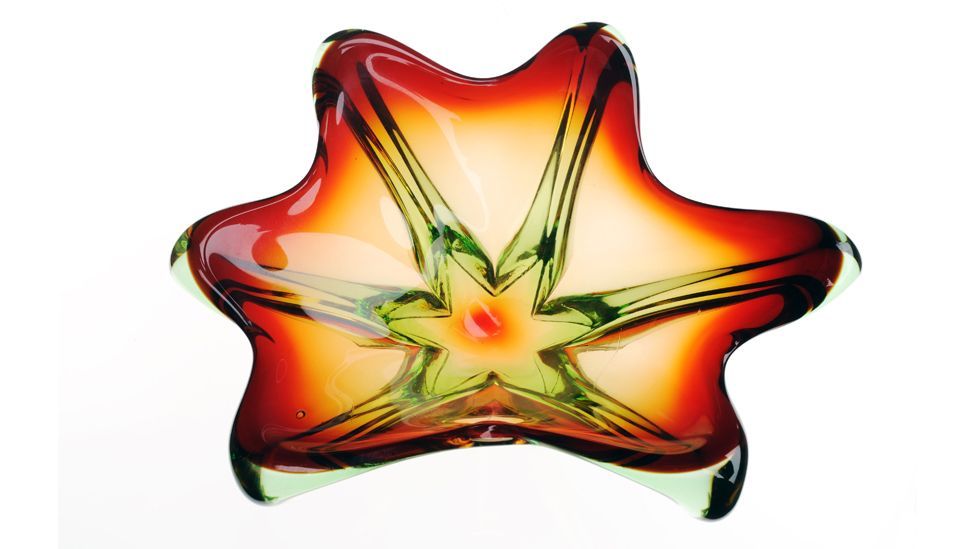“Glass is the poor relation to ceramics,” says Mark Hill, glass collector, author of several books on 20th-Century glass and a specialist on the BBC’s Antiques Roadshow. But, asked why this is the case, Hill is mystified: “I can’t think of an explanation. Somehow glass is secondary to ceramics in terms of the volume of books and articles written and its value in broad-brush terms. An antique porcelain bowl is often worth more than a contemporaneous glass piece.”
More like this:
– The global story of a Dutch icon
– The quirky charm of Norwegian design
– Beautiful homes for extended families
Yet the popularity of glassware endures. Particularly sought-after is experimental, modernist glass produced from the 1930s to the 1970s in Murano just north of Venice, along with glassware from Sweden, Finland, Denmark, the UK, the US and Czechoslovakia. Its appeal has persisted thanks to the broad spectrum of styles produced during the postwar era. There’s a world of difference between Murano’s flamboyant confections that harnessed ancient decorative techniques such as murrine (coloured patterns visible in glass canes cut in cross-section) to create wildly kaleidoscopic, abstract patterns, and the more restrained work of Finnish designers. The Finns favoured modernist simplicity – bold, pared-down forms – and muted, nature-inspired colours.





